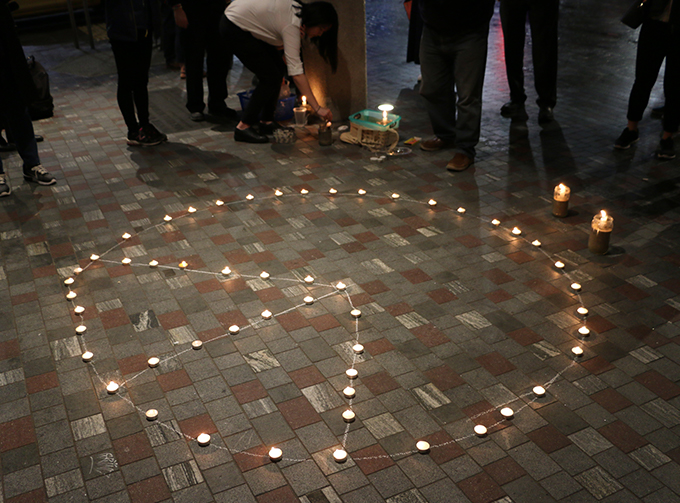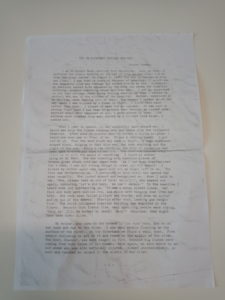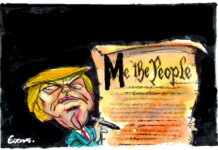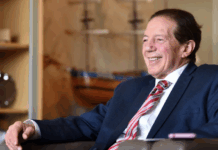
By Michael Andrew
The devastating loss of life and suffering from the 1945 atomic bombing of Hiroshima and Nagasaki was commemorated in Auckland last weekend.
Organised by the Aotearoa chapter of the Women’s International League for Peace and Freedom (WILPF), the 74th anniversary of the bombings brought activists and members of the public to the Ellen Melville Centre to remember the estimated 220,000 people who were killed in the blasts and the resulting fallout.
The evening featured a variety of musicians and speakers whose powerful words stressed the importance of a global pursuit of peace and the rejection of nuclear power and weapons.
VIEW MORE: A peaceful day remembering the horrendous fate of Nagasaki – Del Abcede
Local politician and anti-nuclear activist Richard Northey spoke of New Zealand’s historic anti-nuclear stance and its legacy resisting nuclear initiatives, such as French testing in the South Pacific in the 1960s.
However, he said nuclear power was becoming more appealing to some as an alternative energy source to emission-producing fossil fuels.
He said there was a need for the public to continue pressuring politicians to ensure that such options were not entertained.
“None of us can leave these issues just to others who seem more powerful than us. We must claim and assert power over our own future and take what action we can to achieve a peaceful, just, diverse and empathetic society locally and worldwide,” he said.
Letter of survival
WILPF member Anna Lee then recounted her first anti-nuclear protest in the 1960s in Auckland where Susumu Yoneda, a survivor of the Hiroshima bomb handed her a letter describing his harrowing experience of the blast and trying to find refuge in a razed and burning city while people were suffering in the inferno.

“All around me were wounded people. Some had their eyeballs protruded, others had their bowels burst out. Some were almost burnt to death by heat rays, showing their red flesh,” the letter read.
It finished with an emotional appeal for a total ban and elimination of nuclear weapons to prevent such horror from ever occurring again.
The destruction of the bombs was strikingly contrasted with the beauty of contemporary Nagasaki through WILPF and Pacific Media Centre member Del Abcede’s photos, taken on a trip to Japan earlier this year and on display at the event.
A recurring theme on the evening was a warning against the narrative that the dropping of the atomic bombs was justified.
Intense controversy
Since 1945, the bombs have been the subject of intense controversy and debate with the conventional argument usually following the narrative that their use was necessary to bring about the end of the war.
This has been countered by arguments that the bombs were grossly unnecessary, that the Japanese would have surrendered regardless and that their use was to justify their enormous cost and intimidate international rivals like the Soviet Union.
Valerie Morse from Auckland Peace Action warned against the narrative that the bomb was justified, saying that such arguments could be used as an excuse to use weapons of mass destruction in the future.
Aiko Sakurai, a member of global Buddhist organisation Soka Gakkai International then spoke about the need for youth to recognise its power and responsibly to bring about global peace.

She recalled stories from her grandmother who had survived WW2 in Japan, where food was scarce and cities were ruthlessly firebombed by the American air force.
Plight of Japan
While the Hiroshima and Nagasaki attacks are infamous for the immediate loss of life and the horrific radiation illnesses they caused, an estimated 300,000 to 900,000 people were killed in firebombing in other parts of Japan in the months prior.
On March 9 1945, much of Tokyo was destroyed in a huge firestorm which resulted in a death toll as large, in not larger, as the first day at Hiroshima.
Sakurai declared her commitment to prevent such horror recurring through self-reflection, compassion and awareness of the precious value of each human being.
She concluded with a quote from Soka Gakkai President Dr Daisaku Ikeda: “A great human revolution in just a single individual will help achieve a change in the destiny of a nation and, further, will enable a change in the destiny of all humankind.”
The evening concluded with a candle-lit vigil. In the spirit of the Japanese custom to “send off” spirits through the lighting of fire, people were invited to light candles and place them on the ground, eventually forming a large and glowing dove – the international symbol for peace.













































